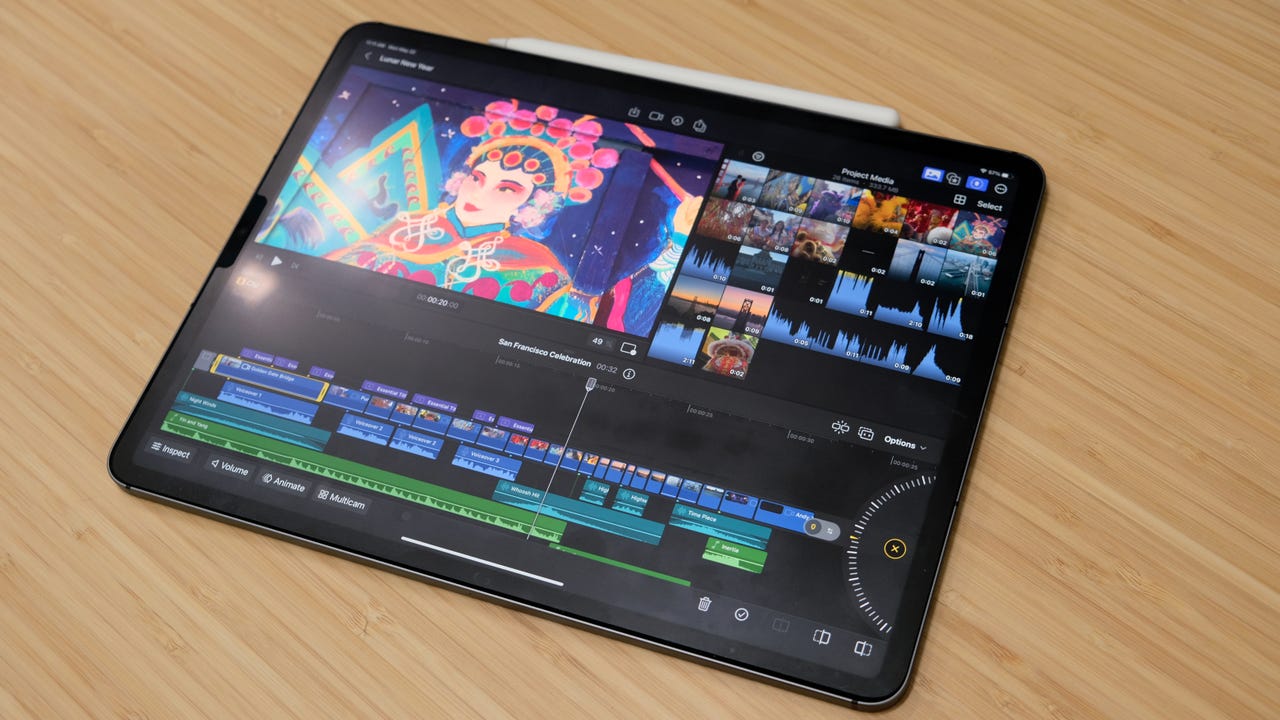'ZDNET Recommends': What exactly does it mean?
ZDNET's recommendations are based on many hours of testing, research, and comparison shopping. We gather data from the best available sources, including vendor and retailer listings as well as other relevant and independent reviews sites. And we pore over customer reviews to find out what matters to real people who already own and use the products and services we’re assessing.
When you click through from our site to a retailer and buy a product or service, we may earn affiliate commissions. This helps support our work, but does not affect what we cover or how, and it does not affect the price you pay. Neither ZDNET nor the author are compensated for these independent reviews. Indeed, we follow strict guidelines that ensure our editorial content is never influenced by advertisers.
ZDNET's editorial team writes on behalf of you, our reader. Our goal is to deliver the most accurate information and the most knowledgeable advice possible in order to help you make smarter buying decisions on tech gear and a wide array of products and services. Our editors thoroughly review and fact-check every article to ensure that our content meets the highest standards. If we have made an error or published misleading information, we will correct or clarify the article. If you see inaccuracies in our content, please report the mistake via this form.
Final Cut Pro on the iPad: A surprisingly touching experience

To use Final Cut Pro you'll need an iPad Air or iPad Pro with an M1 or M1 processor.
A couple of weeks ago, Apple surprised everyone by announcing that Final Cut Pro and Logic Pro were finally coming to the iPad.
These two pro apps had been something that avid iPad users have asking -- sometimes begging -- Apple to release for years. Not only do creative users want access to the same Mac apps on Apple's tablets, but the thinking is that by Apple releasing "Pro" apps for the iPad, it signals the company's dedication to bringing more advanced and productivity-focused features to the iPad.
Also: The best iPads models: The Pro, Air, and Mini compared
To use Final Cut Pro you'll need an iPad Air or iPad Pro with an M1 or M1 processor. Logic Pro, Apple's audio and music editing app, is available on a wider range of iPad models that use Apple's A12 Bionic processor or later.
I've been tinkering with Final Cut Pro on an M1 iPad Pro for a few days now. And I say tinkering because video production is something I'm very much a novice at. When my kids were younger, I spent countless hours making iMovie trailers with them. We had a blast doing it, and eventually, I got good enough at iMovie that I felt comfortable editing and publishing my how-to videos for CNET. (I'd be embarrassed to go back and look at them now. I'm sure they're… not great.)
But that's the extent of my video editing experience. Even now, I regularly record videos here at ZDNET, but I don't edit the clips. We have an awesome video producer who takes care of all of it. She's great.
So, when I think of Final Cut Pro, I think of fancy tools that are complicated to use; it's intimidating for a rookie like me.
Also: 8 cool ways to use LiDAR on your iPhone and iPad
But as intimidated as I was the first time I opened Final Cut Pro on the iPad, it didn't take long for the dots to connect and see where actions and controls from my previous iMovie experience have made the jump to Final Cut Pro. Or, in many cases, have been improved.
iMovie has long been viewed as a stepping stone to Final Cut Pro, and it's even more true now that Final Cut Pro has made its way to the iPad.
Being able to write on top of a video with the Apple Pencil and have it automatically applied as a fancy graphic was pretty cool.
I'm still very much a novice when it comes to editing video, and Final Cut Pro still very much intimidates me because there's just so much you can do with it. But knowing now that there's a lot of overlap between it and iMovie, I'm more willing to go back to it and learn.
Using Final Cut Pro when my iPad Pro is connected to the Magic Keyboard with trackpad feels more like the Mac experience. There are many keyboard shortcuts, and moving the mouse around to drag or trim clips feels routine.
Also: How to use Stage Manager on your iPad (and why you should)
But the moment I lifted the tablet off of the magnetic stand and started using my finger to touch clips, scrubbing through audio with the Apple Pencil, or using the new jog wheel -- which is brilliant, by the way -- the experience just made sense. The entire editing process felt natural.
Being able to write on top of a video with the Apple Pencil and have it automatically applied as a fancy graphic was pretty cool. So was being able to put a title graphic between a subject and the background, all with just a few taps on the iPad's display. But, that's as far as my personal editing adventure went.
Another thing missing is feature parity between the Mac and iPad versions
Final Cut Pro isn't perfect. You can import your iPad-created projects into the Mac version of the app, but the process of bringing the Final Cut Pro projects you started on a Mac to the iPad just isn't possible. You can, however, import your iMovie projects into Final Cut Pro on the iPad.
Also: This $75 dock turns your Mac Mini into a Mac Studio (sort of)
Another thing missing is feature parity between the Mac and iPad versions. The Mac version offers features such as an object tracker, advanced color correction, and third-party content options; the disparity is likely an issue with being able to make a round trip between the two devices.
Another puzzling omission from Final Cut Pro is the lack of Stage Manager support. The only way to use Final Cut Pro is as a full-screen app on the iPad. I imagine there are some technical reasons for not supporting the iPad's latest multitasking interface, but the lack of support says more about Stage Manager than it does Final Cut Pro.
I suspect Apple will never explain why it took years for the iPad to get one of Apple's very own pro-level apps. I'm sure achieving a performance threshold that's made possible by the very same M1 and M2 chips that power Macs is part of the story. But it feels like there's a lot more to it than that.
Also: How to use split-screen on iPad
Initially, I wanted to make a huge deal about Pro apps are finally on the iPad Pro, but the more I've used Final Cut Pro, I realized that Final Cut Pro on the iPad isn't only about bringing pro apps to the iPad lineup. It's more about giving content creators who've grown up using touch as their main method for interacting with computers a chance to put years of experience and touch-first thinking to use using one of the best video editing apps available. It's the touch experience that elevates Final Cut Pro for the iPad, and gives it something the Mac doesn't offer.
You can download Final Cut Pro and Logic Pro starting today. Each app is subscription based (a first for Apple), with pricing currently set at $4.99 a month or $49.99 a year for each app.
